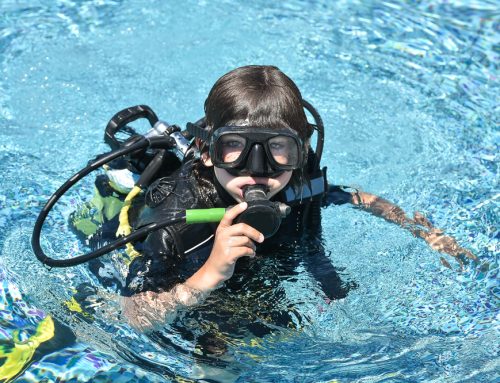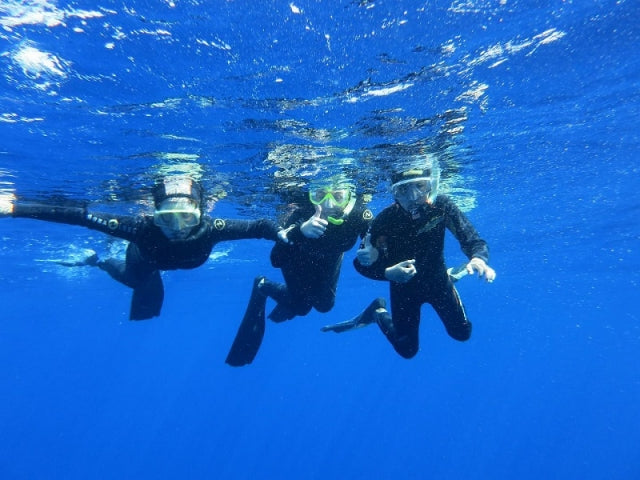Here’s a concise 60-word scuba tank maintenance schedule: Rinse tanks with fresh water after each dive to prevent salt corrosion; inspect O-rings monthly for cracks or wear; store tanks with 50-100 psi to avoid moisture buildup; hydrostatically test every 5 years (mandatory for safety); and visually inspect annually by a certified technician for internal/external damage. Proper care extends tank life beyond 15 years. Always keep valves covered when not in use.
Rinse After Every Dive
Studies show that unrinsed tanks develop corrosion 3x faster than those cleaned after each dive. Even in freshwater, sand, algae, and chlorine can accumulate inside valves and regulators, reducing efficiency and shortening the tank’s lifespan by 2-5 years.
The best practice is to rinse the tank inside and out with fresh water within 30 minutes of surfacing. Salt crystals start forming almost immediately, and if left for more than 24 hours, they can embed into metal surfaces. Use a hose with at least 40 psi pressure to flush the valve opening for 15-20 seconds, ensuring no salt residue remains. If diving in particularly dirty or silty water, a mild soap solution (pH-neutral, like those used for dive gear) helps remove stubborn deposits.
For internal cleaning, fill the tank 1/4 with fresh water, shake vigorously, and drain. This removes micro-particles that could clog regulators later. Avoid submerging the entire tank—water can seep into valve threads and cause hidden corrosion. Instead, wipe the exterior with a soft cloth, paying extra attention to the neck and valve area, where salt buildup is most common.
Storage matters too. After rinsing, let the tank dry upside-down in a shaded, ventilated area for at least 2 hours before storing. Moisture trapped inside can lead to internal rust, which weakens the tank over time. A study by dive equipment manufacturers found that tanks rinsed and dried properly last 10-15 years, while neglected ones often fail inspection after just 5-7 years.
If you dive frequently (more than 3 times a week), consider a professional deep-clean every 6 months to remove buildup that home rinsing can’t eliminate.
| Common Mistake | Consequence | Fix |
|---|---|---|
| Not rinsing after saltwater dives | Corrosion in 6-12 months | Rinse within 30 mins |
| Storing wet | Internal rust | Dry upside-down for 2+ hours |
| Ignoring valve cleaning | Regulator failure | Flush valve for 15-20 sec |
| Using high-pressure spray | O-ring damage | Keep water pressure below 60 psi |
The cost of neglect adds up—a corroded tank can cost 250-600. Spending 5 extra minutes rinsing saves money and ensures safety on every dive.
Check O-Rings Monthly
The most common O-rings in scuba tanks are nitrile rubber (Buna-N) or silicone, with a typical lifespan of 12-18 months under normal use. However, exposure to saltwater, UV light, and high pressure accelerates wear. Monthly inspections are essential because cracks or flat spots aren’t always visible until they fail. Start by removing the valve and checking the primary O-ring (usually 0.5-1.5mm thick) for:
- Cracks or nicks (even hairline fractures can cause leaks at 30m+ depth)
- Flattening (compressed O-rings lose 50% of their sealing ability)
- Stickiness or brittleness (signs of chemical breakdown)
A dive shop pressure test reveals leaks better than visual checks alone. If an O-ring feels dry or rough, apply a thin layer of silicone grease (100% pure, no petroleum additives) to restore flexibility. Avoid over-greasing—0.1g per O-ring is enough—since excess grease attracts dirt.
O-rings degrade 3x faster in direct sunlight or temperatures above 40°C. Keep spares in a cool, dark place inside an airtight bag to extend shelf life to 3-5 years. Divers in tropical climates should replace O-rings every 6-8 months due to higher humidity and heat.
Replacement intervals vary by use:
- Recreational divers (1-2 dives/month): Replace every 2 years
- Frequent divers (5+ dives/month): Replace annually
- Saltwater divers: Inspect every 3 weeks, replace every 9 months
For critical O-rings (like those in DIN valves), upgrading to Viton® ($8-12 per ring) adds 2-3 years of service life, as it resists heat and chemicals better than standard nitrile. Always carry 2-3 spare O-rings in your save-a-dive kit—they weigh less than 5g and fit in any pocket.

Store with Some Air
Storing a scuba tank completely empty is one of the worst things you can do—tanks left at 0 psi develop internal moisture buildup 70% faster than those stored with residual pressure. Industry tests show that a tank kept at 50-100 psi (3.5-7 bar) experiences 40% less corrosion over a 5-year period compared to empty tanks. This simple practice can extend your tank's service life from 10 to 15+ years with no extra cost.
The science behind this is straightforward: When a tank is empty, daily temperature fluctuations cause 0.5-2mL of condensation to form inside per week—enough to start rusting the interior within 6-12 months. This rust weakens the tank's structural integrity and often leads to $150-300 in hydrotesting repairs when discovered during inspections.
For optimal storage, keep tanks at 50-100 psi and store them upright in a temperature-stable environment (15-25°C/59-77°F). Avoid garages or sheds where temperatures swing more than 10°C (18°F) per day, as this accelerates moisture ingress. If storing multiple tanks, rotate them every 3 months—use the oldest one first to ensure no single tank sits unused for more than 180 days, which increases the risk of valve seat degradation.
Visual Indicators of Poor Storage Practices
- Exterior: White crust around the valve (mineral deposits from evaporated moisture)
- Interior: Red/brown dust particles blowing out during filling (advanced rust)
- Hydro Test Results: Flaking visible during internal inspection (requires sandblasting to fix)
Divers in humid climates (relative humidity >60%) should take extra precautions. Adding a desiccant filter ($20-50) to the valve during long-term storage reduces internal humidity by up to 80%. For tanks used infrequently (less than once every 3 months), a monthly pressure check is wise—if the pressure drops more than 10 psi over 30 days, the valve likely needs servicing.
Cost Comparison: Good vs. Bad Storage Habits
| Practice | 5-Year Maintenance Cost | Tank Lifespan |
|---|---|---|
| Stored at 0 psi | $400 (rust removal + hydro) | 8-10 years |
| Stored at 50-100 psi | $100 (basic hydro) | 12-15 years |
A tank stored properly with residual pressure maintains 98% of its burst strength after a decade, while neglected tanks show 15-20% reduced strength due to corrosion. Considering a new aluminum 80cf tank costs $250-400, investing 2 minutes to check pressure before storage pays off exponentially. Dive shops report that tanks with consistent air retention pass visual inspections 90% of the time, versus just 55% for frequently emptied ones.
For long-term storage (6+ months), partially pressurizing to 200 psi provides an extra buffer against slow leaks. Always attach a valve cap—even a tiny insect or dust particle lodged in the valve can cause a $120 repair if it compromises the seal. By making this a habit, you’ll avoid the most common reason tanks fail hydrostatic testing: internal pitting caused by moisture.
Test Every 5 Years
Industry failure rates show that 1 in 200 tanks don't pass hydro testing on their first attempt, usually due to undetected thinning of the sidewalls or base corrosion. A failed test doesn't always mean the tank is trash; about 60% of "failed" tanks can be salvaged with $50-150 worth of repairs like internal polishing or valve seat replacement.
The hydro test itself involves filling the tank to 150% of its working pressure (so a standard 3000 psi tank gets pressurized to 4500 psi) while submerged in water. Technicians measure how much the metal expands and contracts—if it stretches more than 10% beyond its normal elasticity, it fails. Modern aluminum tanks typically withstand 15-20 hydro tests (75-100 years of use) before retirement, while steel tanks often last for 30+ tests if properly maintained.
Visual inspection happens alongside hydro testing and catches 85% of potential issues before they become dangerous. Inspectors look for:
- External pitting (any pit deeper than 0.5mm requires evaluation)
- Thread wear on the valve neck (more than 0.25mm erosion fails)
- Line corrosion around the base (common in tanks stored on damp surfaces)
The entire process takes 20-30 minutes and costs $35-75, depending on location. Many dive shops offer discounts of 10-20% if you bundle hydro testing with an annual visual inspection. Avoid shops that promise "same-day" hydro tests—proper testing requires a 12-24 hour cooling period after pressurization to verify the tank holds stability.
Tank Retirement Indicators
- Aluminum: Visible bulging near the shoulders or waterline corrosion
- Steel: Rust that flakes off in sheets or neck thread "chattering" during filling
- Composite: Delamination sounds when tapped with a plastic mallet
Data shows saltwater-exposed tanks fail hydro tests 3x more often than freshwater-only tanks. If you dive primarily in the ocean, consider a 3-year internal inspection between hydro tests. Some insurers even offer 5-10% premium reductions for divers who can prove regular hydro testing compliance.
Cost Breakdown Over 20 Years
| Maintenance Approach | Total Testing Cost | Risk of Critical Failure |
|---|---|---|
| Strict 5-year hydro tests | $140-300 | <0.1% |
| Skipping 1-2 tests | $70-150 | 8-12% |
| Never tested | $0 | 45-60% |
The math is clear: spending 5,000+ in medical bills from a burst tank. Plus, most dive operators won't fill tanks without a current hydro stamp. Keep records—a well-documented service history can increase a tank's resale value by 20-30%, turning that 360 asset after a decade of use.
For tanks older than 15 years, request a digital thickness scan ($25-50 extra) during hydro testing. This non-invasive check uses ultrasound to measure remaining wall thickness, predicting how many more service years the tank likely has. Modern testing facilities achieve 99.7% accuracy with this method, far better than the old-school "ring test" where technicians tapped the tank and listened for inconsistencies.
Remember: the 5-year rule isn't arbitrary. Metallurgy studies show that corrosion-related tank failures spike dramatically after 1,825 days without testing. Even if your tank looks pristine, microscopic cracks can develop. That hydro stamp isn't just bureaucracy—it's a 5-year warranty that your tank won't explode during your next dive.




Laisser un commentaire
Tous les commentaires sont modérés avant d'être publiés.
Ce site est protégé par hCaptcha, et la Politique de confidentialité et les Conditions de service de hCaptcha s’appliquent.